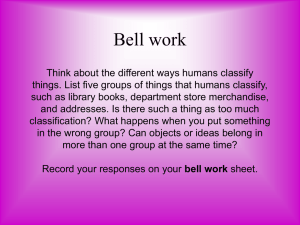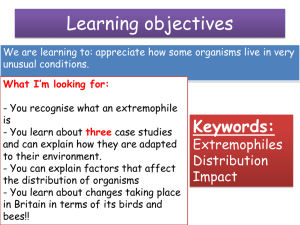The Characteristics of Living Things
advertisement
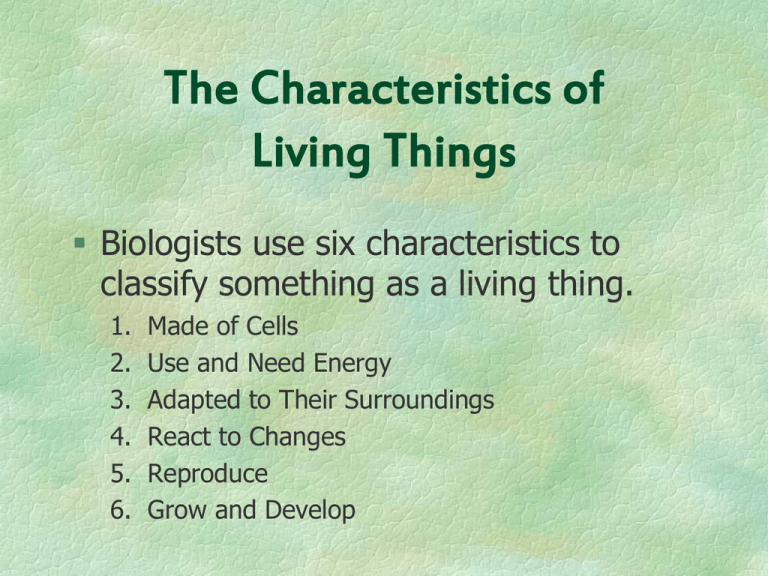
The Characteristics of Living Things Biologists use six characteristics to classify something as a living thing. 1. 2. 3. 4. 5. 6. Made of Cells Use and Need Energy Adapted to Their Surroundings React to Changes Reproduce Grow and Develop The Characteristics of Living Things All living things have these six characteristics. Anything without one of these six characteristics is nonliving. Living things are called organisms. 1. Made of Cells Organisms are made up of one or more cells. A cell is the basic unit of structure and function in living things. Cells = the of life. 2. Use and Need Energy All organisms Sunlight is the need and use source of energy energy to live. for most living things. Energy is the Plants use the energy ability to do work. in sunlight to make food, and animals get energy by eating plants or other animals that have eaten plants. 3. Adapted to Their Surroundings Organisms are adapted, or suited, to their surroundings. All organisms have features that help them survive in their surroundings. For example: fish have gills 4. React to Changes Organisms react to change in their surroundings. Any reaction to change is called a response. For example: A bright light may cause you to blink. 5. Reproduce Organisms produce more organisms of their own kind. Reproduction allows organisms to continue living on the earth. 6. Grow and Develop All organisms grow Living things and develop. change, or develop, during their lifetimes. One way organisms change is by growing. Living things may also change in appearance. • For example: tadpoles and frogs Summary Biologists use six characteristics to classify something as a living thing. 1. 2. 3. 4. 5. 6. Made of Cells Use and Need Energy Adapted to Their Surroundings React to Changes Reproduce Grow and Develop All living things display all of the above characteristics. Discussion As a teacher, one of the techniques for presenting information to your students is through lecture. However, traditionally lectures have been thought of as dull, boring, and utterly uninteresting. Often students don’t pay attention, and even those who do don’t get much actual learning out of it. That was until now. With the help of Power Point almost any lecture can be spiced up to captivate its intended audience and at the same time convey the information that needs to be conveyed. Using Power Point a teacher can add sounds, pictures, movies, and even Flash programs to any lesson. Trying to incorporate these types of valuable multimedia to the chalkboard is virtually impossible. Thus, in my classroom I can foresee myself using Power Point as a tool to lecture with. I could set up my lectures over the summer or whenever I had the free time and could then present them to my students when that chapter was being covered. I think that Power Point would add some value to my lectures in that the students would be more interested and numerous sources of multimedia could be included. The only drawback I see to using Power Point is that it’s somewhat involved and can take a while to produce. However, the extra time that is spent making a Power Point lecture is not wasted time because the lectures can be used again and again. For my students I can foresee Power Point as a project that they might have to complete. I could apply this idea in a number of ways. For example, when learning about the periodic table each student could be assigned a specific group from the table or a specific element and could then produce a Power Point slide show to describe the properties of that specific group or element. Students could also use Power Point as a way of writing-up one lab that they do during the year. The students could develop a slide show to explain the purpose of the lab, the procedure of the lab, and then their results from the lab. They could then present their slide show to the class. I think both of these ideas provide a good break from the normal monotonous homework, lab write-ups, and tests that a chemistry class entails.
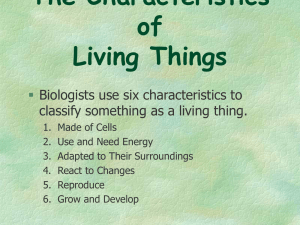
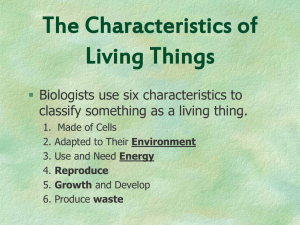
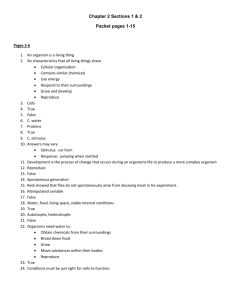



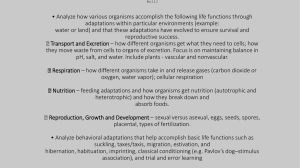

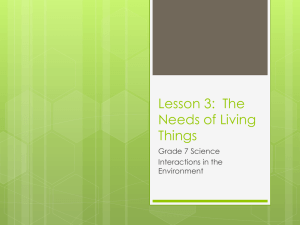
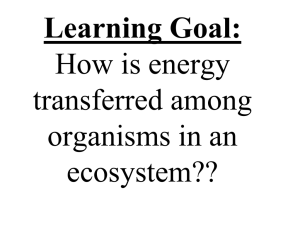
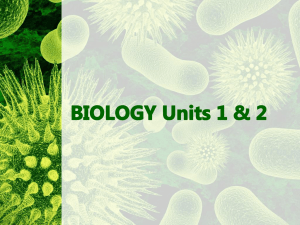
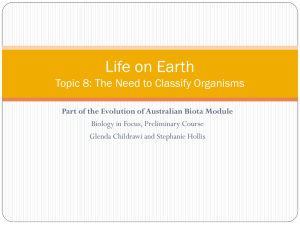
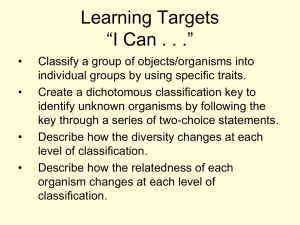
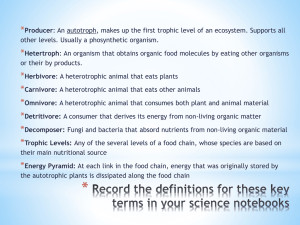
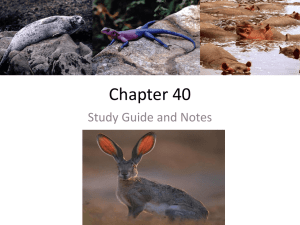
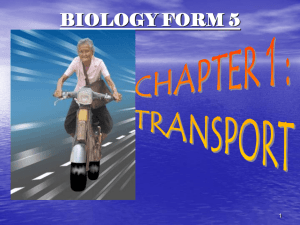

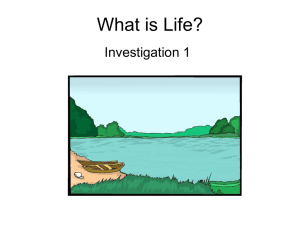

![mb_cg_gi_Forest_PPT[8] - energyinlivingthings](http://s2.studylib.net/store/data/005445338_1-d2239f96e65745d22988fe508fea3c0c-300x300.png)
